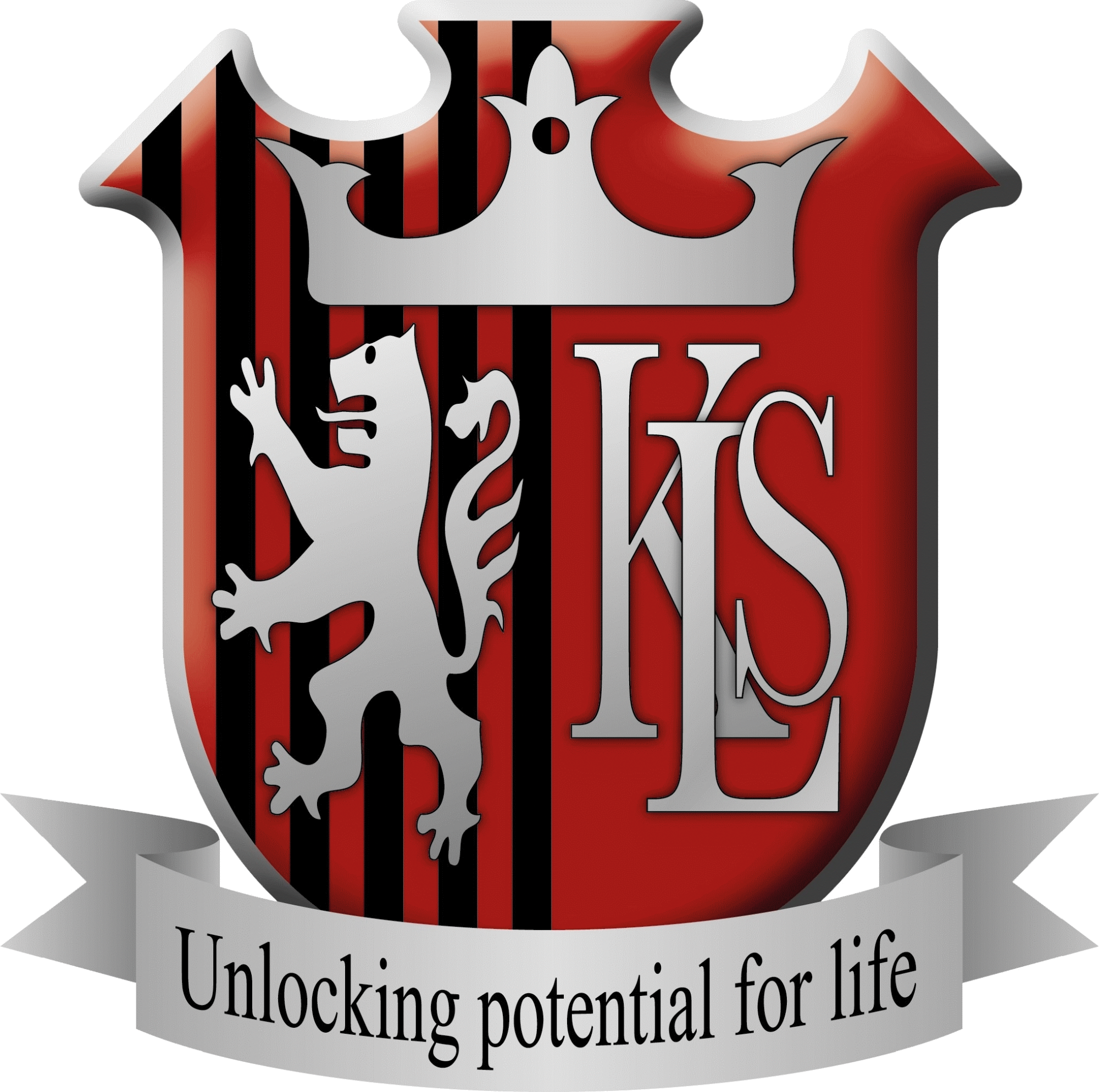House System
“We are only as strong as we are united, as weak as we are divided.”
Albus Dumbledore
On arrival to Kings Langley School, students are assigned to form groups. These form groups are known by letters that represent their houses. Each letter represents a Saint. Each house has a house colour which are often used for clarification in active events and competitions, as well as display purposes.
The intention of the house system is to bring an element of competition. When developing the House competitions, we try to include a broad range of activities as it gives opportunities for students to represent their houses and shine in their own unique gifted areas. Alongside this, it also develops the concept of team work and working together towards a goal. Both of these aspects link well with our character ethos and culture.
A = St. Andrew (Navy blue)
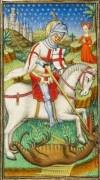
He is the patron saint of Scotland and of Russia. The feast day of St Andrew is November 30th, also known as St Andrew’s Day. St. Andrew, also called Saint Andrew the Apostle, (died 60/70 CE), and was one of the Twelve Apostles of Jesus and the brother of St. Peter.
In The Gospel According to John, Andrew is the first Apostle named, and he was a disciple of St. John the Baptist before Jesus’ call.
In the Synoptic Gospels (Matthew, Mark, and Luke), Peter and Andrew were called from their fishing by Jesus to follow him, promising that he would make them “fishers of men.”
C = St. Christopher (Orange)
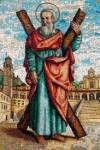
He is the patron saint of travellers, and from the beginning of the 20th Century, of motorists.
St Christopher has two feast days: Western feast day is the July 25 and the Eastern feast day is May 9.
He was venerated as one of the 14 Auxiliary Saints (Holy Helpers), though there is no certainty that he existed historically.
He, after being converted, devoted his life to carrying travellers across a river. One day in the middle of the river a child became so heavy that Christopher staggered under the burden and was told that he had borne upon his back the world and Him who created it. Hence, he is generally represented in art carrying the Christ Child on his back.
D = St. David (Yellow)
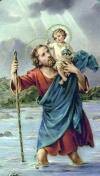
He is the patron saint of Wales. (born c. 520, died c. 600)
The feast day of St David is March 1st also known as St David’s Day.
Many miracles are ascribed to St. David, including the resurrection of a dead child and the restoration of sight to a blind man.
One of the more famous miracles associated with him is the formation of a hill beneath him as he preached to a large crowd, allowing them to see and hear him more clearly. During this incident, a white dove is said to have landed on his shoulder, and St. David is often so depicted.
David founded numerous churches throughout South Wales (more than 50 named for him existed in the 21st century).
G = St George (Red)
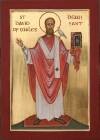
He is the patron Saint of England and Georgia. (3rd century—died)
The feast day of St George is April 23rd and is also known as St George’s Day).
Nothing of George’s life or deeds can be established, but tradition holds that he was a Roman soldier and was tortured and decapitated under Diocletian’s persecution of Christians in 303.
He was seen as an early Christian martyr who during the Middle Ages became an ideal of martial valour and selflessness and was venerated as one of the 14 Auxiliary Saints (Holy Helpers).
The legend of his rescuing a Libyan king’s daughter from a dragon and then slaying the monster in return for a promise by the king’s subjects to be baptised. The saint frequently being depicted as a youth wearing knight’s armor with a scarlet cross.
J = St. John (Purple)
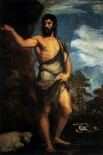
John the Baptist (c. 1st century BC – c. AD 30) was a Judaean preacher active in the area of the Jordan River in the early 1st century AD.
He is revered as a major religious figure in Christianity, Islam, the Baháʼí faith, the Druze faith, and Mandaeism. He is considered to be a prophet of God by all of the aforementioned faiths, and is honoured as a saint in many Christian denominations.
According to the New Testament, John anticipated a messianic figure greater than himself, and the Gospels portray John as the precursor or forerunner of Jesus. According to the Gospel of Luke, John and Jesus were relatives. John was sentenced to death and subsequently beheaded by Herod Antipas around AD 30 after John rebuked him for divorcing his wife Phasaelis and then unlawfully wedding Herodias, the wife of his brother Herod Philip I.
P = St. Patrick (Green)
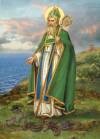
He is the patron saint and national apostle of Ireland (flourished 5th century), his feast day is March 17.
St. Patrick is credited with bringing Christianity to Ireland and probably responsible in part for the Christianisation of the Picts and Anglo-Saxons.
He is known only from two short works, the Confessio, a spiritual autobiography, and his Letter to Coroticus, a denunciation of British mistreatment of Irish Christians.
There are many legends associated with the life of St. Patrick. According to one, he miraculously drove all the snakes of Ireland into the sea. He is said to have used the three leaflets of the shamrock to explain the concept of the Holy Trinity. He reportedly raised as many as 33 people from the dead
T = St. Teresa (Light blue)
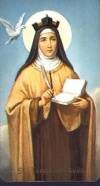
St. Teresa of Ávila was a Spanish Carmelite nun who lived in the 1500s. She was a mystic and author of spiritual writings and poems. She founded numerous convents throughout Spain and was the originator of the Carmelite Reform that restored a contemplative and austere life to the order.
St. Teresa of Ávila was the first of only four women to have been named “doctor of the church”. Her ascetic doctrine and Carmelite reforms shaped Roman Catholic contemplative life, and her writings on the Christian soul’s journey to God are considered masterpieces.

